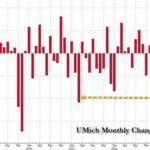
–>
April 27, 2023
Drug companies see a chance to cripple 340B, a program they once championed.
‘); googletag.cmd.push(function () { googletag.display(‘div-gpt-ad-1609268089992-0’); }); }
The about-face by the pharmaceutical industry is surprising, given that drug makers lobbied aggressively for the 2010 Affordable Care Act (ACA) knowing it would expand 340B. Unlike for-profit drug makers, nonprofit 340B beneficiaries help the federal government reduce costs and improve clinical outcomes.
The 340B program enables healthcare nonprofits to stretch scarce federal resources as far as possible, providing underserved patients with comprehensive services. Yet many Americans have never heard of the 340B program or the role it plays in the healthcare system. When people think about the healthcare safety net, a few names come to mind — programs such as Medicaid, Medicare, CHIP, and SNAP extend vital services for low-income, uninsured Americans.
340B represents a different type of lifeline for those in need. Unlike the more well-known federal assistance initiatives, taxpayers do not pay a dime for 340B. And that’s the point: To simultaneously provide quality care and lessen the burden of healthcare expenditures financed by Americans.
‘); googletag.cmd.push(function () { googletag.display(‘div-gpt-ad-1609270365559-0’); }); }
Instead of sticking taxpayers with the tab, the federal government forged an agreement with drug companies to create 340B. Drug makers agreed to discounts for drug purchases made by a limited number of nonprofit providers. Healthcare nonprofits then use the savings to offer additional services to patients. In return for discounts extended on a sliver of overall prescription drug sales, drug companies gain access to the much larger Medicaid and Medicare prescription drug markets — it is a win-win. In effect, drug companies cut prices for 340B providers in exchange for greater profits, backed by a guaranteed payer no less (the federal entitlement prescription drug markets).
 Without substantive changes, Medicaid and Medicare are on the path to fiscal insolvency. Just look at the prescription drug benefit portions of each program: The ACA mandated Medicaid expansion in 2014. In its first year, with millions of new enrollees, Medicaid Part B spent $43.2 billion on drugs. With rebates, net spending dropped to $23.2 billion.
Without substantive changes, Medicaid and Medicare are on the path to fiscal insolvency. Just look at the prescription drug benefit portions of each program: The ACA mandated Medicaid expansion in 2014. In its first year, with millions of new enrollees, Medicaid Part B spent $43.2 billion on drugs. With rebates, net spending dropped to $23.2 billion.
By 2021, gross spending ballooned to $80.6 billion, while rebates lowered net spending to $38.1 billion. Based on prior expenditures, the 2022 Medicare Trustees Report offers a bleak picture for future Part D expenses. In 2006, the prescription benefit plan for seniors cost the federal government $33.9 billion. By 2014, costs more than doubled to $72.6 billion. In 2021, expenditures reached $110.1 billion. Estimates for 2031 outlays now come in at a whopping $198.5 billion.
In 2021, nonprofits purchased $43.9 billion worth of discount drugs through 340B, and the discounted price undersells taxpayer savings. At the same time, nonprofits do all they can with 340B savings to keep underserved Americans out of hospital emergency rooms and maintain care that encourages better health outcomes.
The 340B program functions as a health and wellness multiplier for the federal safety net. Not only do nonprofits provide expensive medicines to patients that would otherwise end up on entitlement rolls, but the government relies on these nonprofits to offer an array of vital services. Such services include case management, dental care, hospice care, and clinical testing, among others. Underserved Americans need these services to remain healthy and lead productive lives.
If not for 340B, Medicaid and Medicare agencies would bear the costs. As a result, the government would be forced to increase health expenditures — placing the burden on taxpayers in the long term — or increase taxes to fill coverage gaps, placing the burden on taxpayers in the short term. Neither solution guarantees the cost-effective, successful clinical outcomes offered by 340B nonprofits.
‘); googletag.cmd.push(function () { googletag.display(‘div-gpt-ad-1609268078422-0’); }); } if (publir_show_ads) { document.write(“
Yet drug companies want to neuter the one program that keeps Americans off federal healthcare rolls. To no one’s surprise, the drug industry — propped up by its army of lobbyists — does not care about limited federal resources. Drug makers have only one concern, which is to find markets for their overpriced products. Drug companies ignore the fact that the federal government effectively created an additional market for their drugs with 340B, which connects them to medically underserved Americans who could never hope to afford drug company list prices.
Pay no attention to drug company propaganda. The pharmaceutical industry’s balance sheet won’t be adversely affected, since 340B discount prices only apply to outpatient prescribed drugs. Medicine given to patients during long hospital stays or administered at health clinics is ineligible for 340B discounts. Drug companies still get to charge nonprofits sticker shock prices during in-patient care.
The 340B program design secures desired outcomes for all parties involved — from drug companies and healthcare nonprofits to the federal government. Drug makers reap substantial profits, nonprofits receive vital resources, and the federal government reduces its spending. The drug industry’s insatiable appetite for more would limit 340B discounts, leaving taxpayers to foot the ultimate bill.
John Arcano serves as policy analyst at AIDS Healthcare Foundation.
Image: Marco Verch Professional Photographer
<!– if(page_width_onload <= 479) { document.write("
“); googletag.cmd.push(function() { googletag.display(‘div-gpt-ad-1345489840937-4’); }); } –> If you experience technical problems, please write to [email protected]
FOLLOW US ON
<!–
–>
<!– _qoptions={ qacct:”p-9bKF-NgTuSFM6″ }; ![]() –> <!—-> <!– var addthis_share = { email_template: “new_template” } –>
–> <!—-> <!– var addthis_share = { email_template: “new_template” } –>





